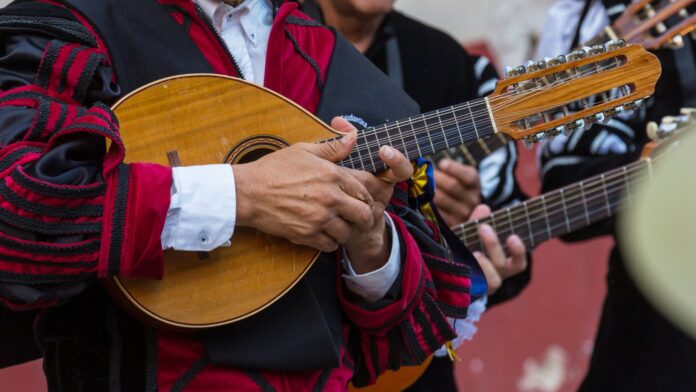I’m sure you’ve gotten questions about your culture before. How about questions about your heritage? Did you ever feel like they were the same, but then were unsure about it? Well, if you’ve ever felt that way, you’re not alone. A lot of people have difficulties answering questions about their culture and heritage and that’s mainly because the differences among them are very minimal. But don’t worry! I’m here to help you differentiate both these concepts.
It is good measure we are able to have a conversation about this, especially since Hispanic Heritage Month is upon us. I know Hispanic Heritage Month may not always bring the best feelings within our community, but we can at least acknowledge the fact that it sparks light on significant topics. One of the topics that it brings about is how the word “heritage” in Hispanic Heritage Month should not be considered an umbrella term for everything that has to do with Hispanics or the latinx community, or any community for that matter. It’s ignorant to believe that everything concerning a specific group of people can fit in one month and under three simple words. It’s actually much more complex than that.
What is Heritage?
First, let’s break it down in terms of its etymological derivation. I think it’s always important to learn the roots of everything (pun intended). The word “heritage” originated from the Old French words iritage, eritage, heritage, and heriter, which meant “heir” or “inheritance”. The word heriter, meaning “inherit,” stemmed from the Late Latin hereditare. Therefore, from the origin of the word “heritage,” I believe it’s safe to say that heritage is what we’ve inherited. In this situation, heritage is simply the inheritance of your ancestors.
The great part about heritage is that you don’t need to be added into some sort of will or final contract to enjoy all of its wonders. Your heritage is yours and no one can take that away from you. Well, greedy governments and leaders may try to get in the way from time to time (deep sigh), which is why it’s so important to embrace your heritage as much as you can. That way you can fight for it, if it ever gets to that point.
Understanding about heritage, especially your own, is a vital part of your growth. In fact, all of the diverse selection of heritage in our world are part of the fabric that shape the interconnectedness of humanity and cultural identity.
Now, what’s part of your heritage? Well, my friend, so much.
In order to delve deep into your heritage, you need to get acquainted with its three elements. Heritage is comprised of tangible, intangible, and natural elements. Don’t worry, it’s not as complicated as it seems.
The tangible element of heritage is used to represent historical sites, artifacts, archives, historical art, monuments, and so much more. Pretty much, the tangible part of heritage is anything that you can see and possibly touch or just the act of it being concrete and present with you. On the other hand we have the intangible element of heritage. As you may have guessed from its name, the intangible elements are based off of things that you can not see or touch per see, but you can still feel its effect. Within the intangible elements are cultural customs, dance, music, folklore, our crafts, among many other things, but you get the point. As for the natural element, well, that one is based off the natural environment of our heritage. This could mean landscapes, animals, plants, and native wildlife, to name a few. Isn’t it wonderful to see how much has been left to you throughout time?
Even though heritage is like a box of treasures for a group of people, it doesn’t mean that those wonders didn’t come with their sacrifices. As history has taught us all, blood and tears has always been at the core of our humanity, which is why appreciating heritage is so important. Although I am partial to Latin American heritage, just like many of you reading this right now, it doesn’t mean we shouldn’t show respect to other heritages. Truly, that’s something I urge everyone to do. Let’s make it a point to learn what’s right and wrong for each heritage and help maintain its legacy.
Examples of Heritage
The world is full of beautiful portrayals of heritage. It’s in every corner of our lovely planet and in everything that we do. I really wish I could show all of them to you and talk about the significance of each of them, but I won’t. I don’t think our editor would want to go through the beginning of an atlas and I’m betting you aren’t going to want to read all of that either. So, I’ve just chosen some of my favorite examples of latinx/Hispanic heritage. I’ve yet to visit many of them, but they’re definitely in my bucket list. I’d love to know what some of your favorite examples of heritage are.
This is the Pyramid of the Sun in the ancient city of Teotihuacan, Mexico. It is the third largest pyramid of the world. As for who exactly built the pyramid is still a mystery. However, archaeologists are sure that it was built around 1,000 years before the Aztecs arrived in the area. Nevertheless, this pyramid makes up part of Mexico’s and Latin America’s most prized legacy.
Cumbia has been a dance that has made part of Latin America and Hispanic heritage for some time. This melodic and energetic dance derives from black and indigenous backgrounds, though the costumes worn can be said to originate from European influences. It is alleged that cumbia arrived to Colombia when African slaves were brought around the 17th century into the country after Spain had colonized it. After that, Colombians learned the African word cumbe, which means dance and their dance to follow it through. Ever since then, cumbia has spread to other Latin American countries, making it seem as the ever-remaining language of an unforgettable rhythm. You can even hear some of its influences in songs by our late queen, Selena Quintanilla.
Here you have the Amazon Rainforest in all of its glory. If you ask me, this is the epitome of heritage — nuestra herencia. Whether or not it’s popularly described as part of any heritage, the Amazon lies within several countries of South America, which irrevocably makes it part of our Latin American heritage. Hell, I refuse to believe that the Amazon belongs mainly to one government. This is ours as well. However, it is important to note that this vast piece of luscious land is not only our inheritance, it is also the entire world’s inheritance. Protecting it, protects everyone’s future. Don’t ever forget that, especially in these trying times where we have recently witnessed our world’s lungs burn away.
What is Culture?
As I did with the word “heritage,” let’s briefly explore the etymology of “culture.” This word is said to have derived from the French word, which was then preceded by the Latin word cultura. In these times, the word cultura, which transcended into the word “culture,” meant to “cultivate or grow.” It held it’s agricultural meaning for many years until a much more modern meaning started being used between the 18th and 19th centuries. During this time, the Roman orator, Marcus Tullius Cicero introduced the phrase cultura anima, that can be interpreted as “the cultivation of the soul.” Shortly after, German philosophers, such as Immanuel Kant, started using the word “culture” to explain identity. It is from then that we started seeing the transformation of the word to mirror the definition we currently use.
As you can tell, “culture” has gone through several variations, but now let’s focus on what it means today.
According to our current understanding of the word, both based on its etymology and its historical, philosophical, and agricultural evolution, culture refers to the social behavior of a particular group or society. These social behaviors includes customs, traditions, human values, language, myths, among other things. Culture deals with the execution of creativity derived from heritage or other sources to describe their society. Culture can also be distinguished among various groups and subgroups, such as Western culture, Eastern culture, African culture, and so on.
Even though these elements may seem similar to those of heritage, there is something that sets them apart. See, the elements of culture are prone to change, while the elements of heritage can not change. Heritage is inscribed into history for as long as you’re willing to preserve its story and significance. You can create other things with the influence of heritage, but if it isn’t timeless, then it would be considered part of culture.
Let’s take perreo, for instance. This popular dance, usually danced with reggaeton blasting in the background, is an adaptation of African dance traditions concocted by European influence. As much of anything regarding the latinx community, the roots of the signature dance of reggaeton is a direct object of the effects of colonization. In this case, the African dance traditions was the component of heritage, while the recreation of the dance is the part that makes up culture. Basically, culture can sometimes be seen as a remix of heritage.
Another thing you should take into consideration about culture is its accessibility. Being that we live in a world where things are extremely attainable, thanks to globalization, elements of culture are constantly being re-imaged. An example of this is the adaptation of cultural food, like tacos for instance. For the most part, the world loves Mexican cuisine, especially tacos, but other cultures have tried to put their twist on them. By adding a different cultural twist to tacos, the tacos lose its essence, its complete heritage component, and instead becomes a modification to fit that particular society’s or group’s liking.
Examples of Culture
Culture is definitely intertwined with heritage, yet it’s an entire concept on its own. To continue with the theme, I will provide a few examples of culture in regards to Latin America. You’ll be able to notice how each example has the capacity of being adapted differently depending on which region is implementing it.
Oh, yes. Los Quinces or La Fiesta Quinceañera. This cultural tradition is said to have started in the ancient customs of the Aztecs. Initially, the birthday girl, in this scenario called the Quinceañera, was presented to society as her leaving childhood and entering womanhood. The reason for this was because in ancient times, most girls left their homes at age 15, hence the massive celebration of their fifteenth year of life. All of this was normal, including the part that these girls would leave their homes to become wives, which was usually followed by quick route to motherhood. This tradition has regularly been celebrated by members of Latin American cultures.
Thankfully, the significance of this celebration has changed ever since its debut. Nowadays it’s mainly seen as another opportunity to throw a lavish party that La Fiesta Quinceañera has been modified based on the region it’s representing. There’s the Mexican Quinceañera, the traditional Quinceañera, and even a religious Quinceañera.
This wildly famous Puerto Rican dish, Mofongo, is a representation of a region’s cultural tradition. The Mofongo is prepared by peeling and frying green plantains, and then mashing them in a pilon (a wooden mortar). There’s different variations of it. It all depends on what sauce you like and what protein you want to complement it with. Mofongo has also inspired other “off-brand” dishes, such as Mofongo made out of yuca.
A lot of people in Latin American and Hispanic cultures believe that if your feet are swept by a broom, you’ll stay single forever. Lord, I can’t even begin to count the times I was told that, especially since I used to sweep over my feet often when I was younger. Don’t ask me why, it just happened. Now, this belief or myth is part of the many cultural traits that encompasses Latin American culture. All I know is that I’m practically married and my feet got swept by a broom plenty of times. I will say that I do sweep very carefully nowadays and away from my feet. You never know, right?
Ultimately, the values of heritage and culture must coexist in order to be understood. All you have to remember is what differentiates both these concepts. Always keep in mind that culture is prone to change, while heritage holds strongly to unchangeable legacies and inheritances.
For Image credit or remove please email for immediate removal - info@belatina.com


































